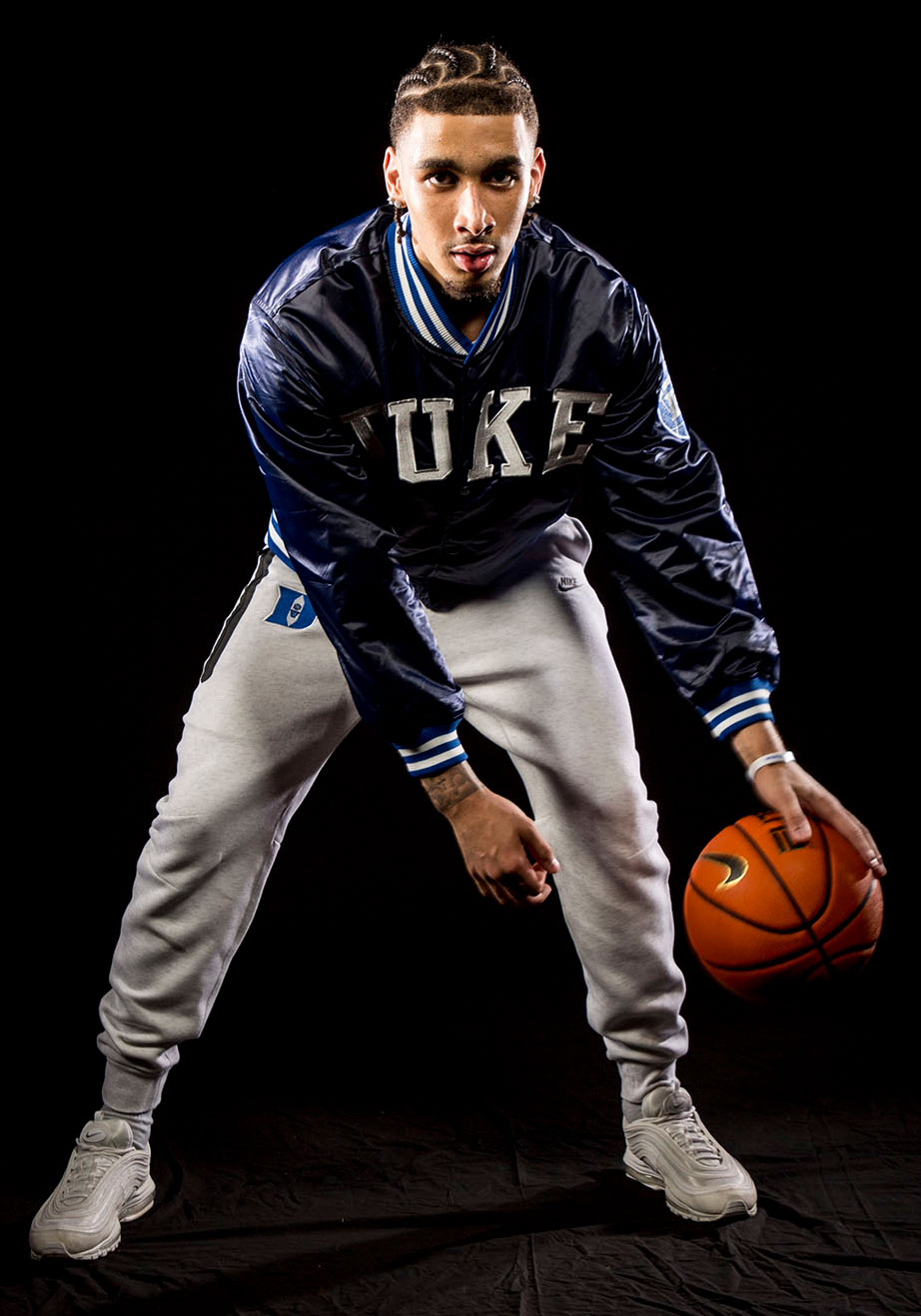Welcome to the college athletics world of NIL – name, image and likeness – where we virtually guarantee that by the time you finish reading this story, at least some of its information will be out of date. That’s because the landscape surrounding college athletics and the NCAA policy allowing student-athletes to make money from their personal brands is changing at full gallop.
As Mike Krzyzewski asked on the Field of 68 Media Network podcast in 2023, “Who can explain NIL? A lot of people can explain it, but you’d have different explanations.”
That was a year ago. Things have only grown more complex since then. Coach K – and many others in college athletics – wanted one clear explanation.
What follows is our attempt at just that – at least for now.
How we got to today
When Terrell Smith ’03 walks into a dinner party, things get crazy.
“You would think I was LeBron James or something,” says Smith, and not because he was once an all-ACC Duke safety. Smith is now Duke’s assistant director of athletics/NIL strategy. “And it’s like ‘We heard he was going to be here!’ And the main thing they talk about is, ‘How is this working?’”
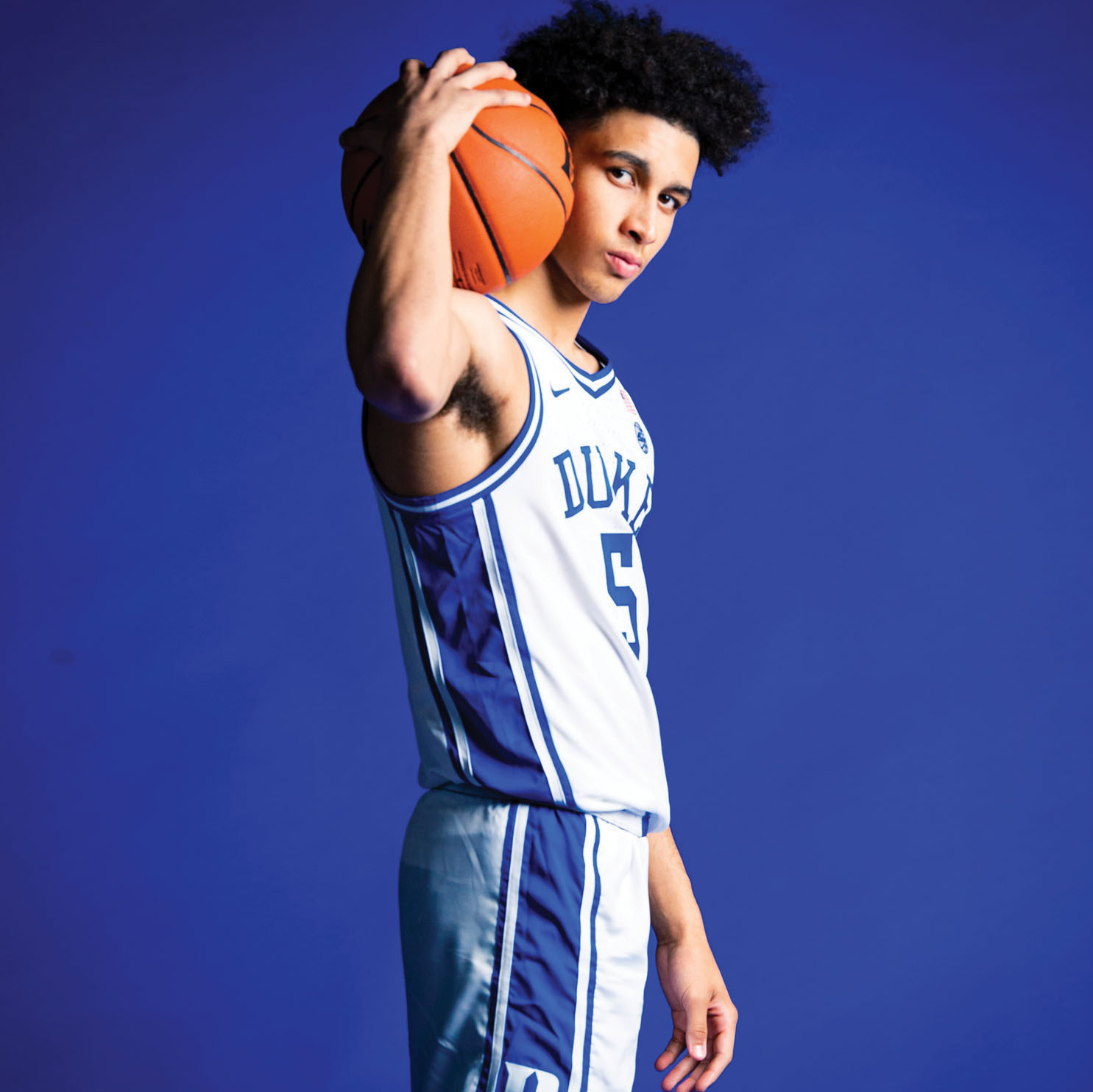
TYRESE PROCTOR
Year: Junior
Major: African and African American Studies
Sport: Men’s basketball
Notable NIL Partners: Bath & Body Works, Express men’s clothing, Podium jewelry, Downy Rinse and Refresh
Social: Insta: @tyrese4proctor (74K); TikTok: @tdp5__ (73K)
Duke Difference: Rachel Baker: “She’s always there supporting and helping me with shoots and stuff like that.” Aaron Dinin: “Just picking his mind. He’s obviously a guru with all the social media.”
Thoughts: “Not many kids at 18, 19, 20 can make the kind of money that some kids these days are making. And you’ve got to just be grateful for that, while you keep the main thing the main thing. That’s what’s really cool about it.”
Good question. As Nina King, vice president and director of athletics, notes, nobody is quite sure. College sports “were messy before, as an industry,” King says, laughing. “And this has really put us into a tailspin.”
You know the basics: College athletes can be paid now, for the use of their name, image and likeness (NIL), and they’re entitled to a share in the money-making business of university athletics. Smith has the job of helping players deal with new NIL realities, and he works with Rachel Baker, hired by men’s basketball coach Jon Scheyer in 2022 as the nation’s first basketball general manager in charge of NIL.
To understand the new reality, Paul Haagen, co-director of the Center for Sports Law and Policy at Duke Law School, looks at the big picture.
“The lay of the land is that the antitrust cases have gone against the NCAA sufficiently consistently that there is now an unwillingness to defend restrictive practices,” Haagen says. “And athletes, institutions and regulatory bodies are all scrambling to figure out where they are.”
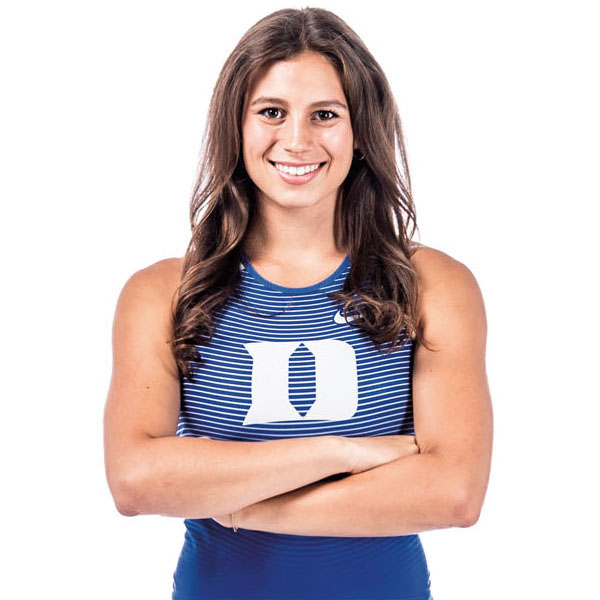
JULIA MAGLIARO
Year: Sophomore
Major: Leaning toward public policy with an economics minor
Sport: Track and field – javelin
Social: Insta: @juliamagsss (5K); TikTok: @juliamagsss (1K)
Duke Difference: Former teammate Emily Cole, a social media super influencer; former softball player Peyton St. George; Dawn Kane and Leslie Barnes at Duke Student-Athlete Development; Aaron Dinin; Ezra Kucharz.
Thoughts: "Duke [has] all these amazing people here to support you. I just try to take advantage of everything that Duke has to offer."
The antitrust cases Haagen cites came in response to generations of college athletics being guided by a notion of amateurism, whereby any money athletes made through sport got them kicked out of college sports. Meanwhile, coaches made thousands of outside dollars with endorsements and shoe deals.
In 2009, former UCLA basketball star Ed O’Bannon sued the NCAA because his image was used in a video game for which he and other athletes received no payment. A resulting class-action lawsuit claimed that NCAA rules prohibiting player compensation restrained competition, making it an antitrust case.

"I like NIL," says athletic director Nina King. "True, pure NIL – what it was supposed to be."
The athletes won when a district judge ruled in 2014 that the NCAA rules were an unreasonable restraint of trade. That did not yield much clarity, according to Len Simon J.D.’73, who has taught with Haagen and written extensively about money in college sports, “but the public started to focus on the issue more.” In 2019 a similar case, led by West Virginia University football player Shawne Alston, was also won by the athletes, and the judge ruled that restricting scholarship compensation to only tuition, books, room and board was also an antitrust violation. When the Supreme Court in 2021 unanimously upheld that ruling, Justice Brett Kavanaugh wrote a concurring opinion that suggested any NIL limitations were violations. After that there was “no reason,” Haagen says, “for the NCAA to have any confidence that any of their compensation-related restrictions will hold up, effectively getting the regulatory bodies afraid to regulate the use of NIL.”
What is the Duke Difference when it comes to NIL?
Thus began the current era, in which athletes overtly make money through endorsement deals and monetizing their social media brands, and colleges and universities assist them in taking advantage of opportunities. Says Rachel Baker, helping athletes manage their NIL programs “really isn’t much different than coaching.” They learn branding, management, accounting. In the way that coaches have sought to teach their athletes life lessons, Baker goes on, “for all intents and purposes things don’t feel that different” with NIL.
Then came the historic House v. NCAA settlement in May of this year – the culmination of a series of antitrust cases in which athletes (including former Arizona State swimmer Grant House and former Duke football player DeWayne Carter ’23) sued the NCAA for the NIL revenues they did not make before 2021 and straightforwardly demanded a share of future broadcast revenues. On May 23, the NCAA and the five biggest sports conferences announced a $2.8 billion settlement. At press time, the settlement was still pending approval by the judge in the case, but included in it is a provision allowing schools to raise and disburse $20 million per year in direct payments to athletes.
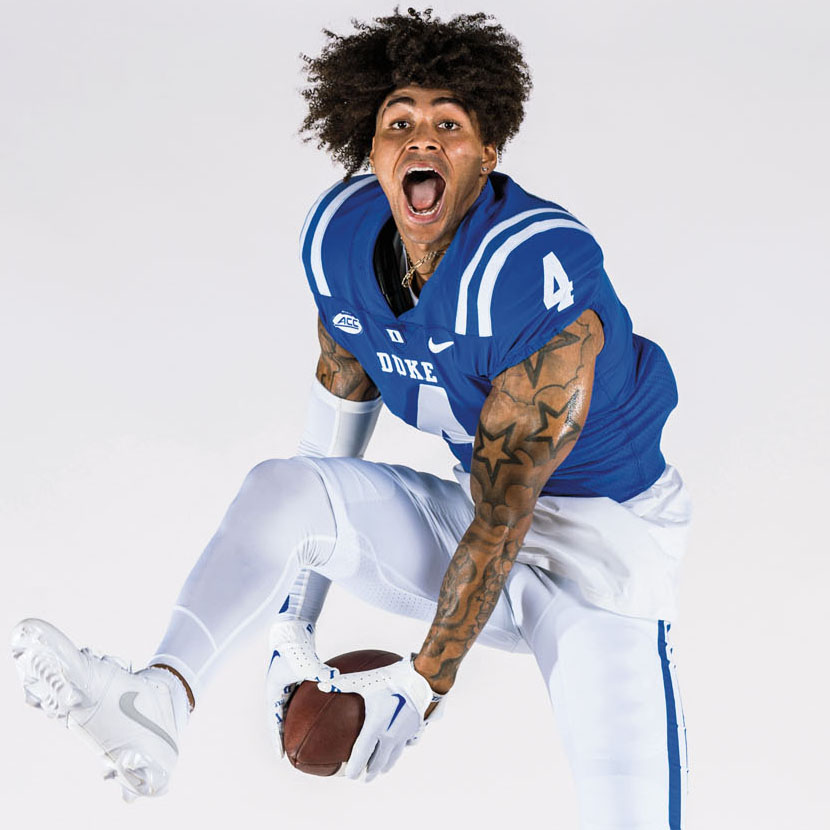
ELI PANCOL
Year: Graduate student
Major: Master’s in business administration
Sport: Football
Notable NIL Partners: Sour Strips candy, Millions Clothing Co., Odyssey Watches
Social/followers: Insta: @elipancol (7.5K); TikTok: @efly (50K)
Duke Difference: “Aaron Dinin. That’s my guy.” Duke “can compete with anybody in the nation when it comes to NIL nowadays. So, I 100 percent think that we can compete with those guys that would do those illegal things” before NIL.
Thoughts: “You're not just handed anything. You get what you put in, like anything … every day you have to build your brand. It’s not just about how you’re playing. These brands will … gravitate towards you based off your personality.”
Another outcome of the House settlement is the explosion of collectives, groups of supporters banding together to raise money for a school’s athletes. Duke has two – the Durham Devils Club, which finds NIL opportunities mostly for football players, and the One Vision Futures Fund, which focuses solely on basketball.
Between NIL, the collectives and the House settlement money, student athletes are now getting paid. How much an individual athlete receives is not public information. But Becca Greenwell Wathen ’17, M.M.S.’18, onetime basketball All-American, is a strategic partner manager at Meta, helping athletes use social media to build their NIL brands. She stresses that despite a few high-dollar deals for football and basketball stars, most athletes are making money but not getting rich.
A Timeline of NIL's History
“I would say the average NIL deal is anywhere from like $500 to $2,000,” she says, for a campaign in which an athlete makes a few social media posts, and they may do a few of those per year. They may sign a ball or do an in-person visit. The only regulation that seems to be currently enforced is that any payment requires that quid pro quo – you can’t just give a student-athlete money. Although, says King, “If you sign a basketball, we’ll give you a million dollars, right? It’s not exactly quid pro quo.” It’s college athletics. Everybody wants to win.
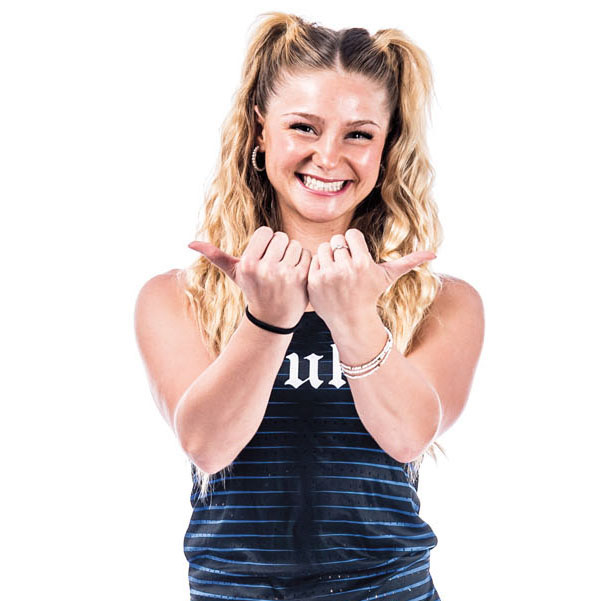
GIANNA "GIGI" LOCCI
Year: Junior
Major: Public Policy
Sport: Track and field
Notable NIL Partners: Lulus, McDonald’s, Hey Dude shoes, Sephora Innbeauty
Social: Insta: @giannalocci (22K); TikTok: @gigiloccii, @gigilocci (91K total)
Duke Difference: Terrell “Smitty” Smith, who provides information about whether opportunities are trustworthy. Aaron Dinin: “His information and resources that he shared really opened my eyes – aside from being an athlete, just as an individual – to the power and influence of social media … and the great things that influencers can do online.”
Thoughts: “[NIL] is amazing because it almost levels the playing field with increased visibility for female athletes. We’re inspiring the next generation, and I think that is a huge opportunity for female athletes.”
Duke, like everyone, is feeling its way along. Is the overt money steering recruits to schools that promise to maximize their NIL earning potential? Does Duke’s emphasis on academic achievement limit its competitiveness in the NIL arena? Or, with special programs designed to teach brand-building, financial literacy and other aspects of running a personal business – what Duke calls the “Duke difference” – is it a college sports unicorn?
Baker has no doubts. “I view this as 100 percent additive,” she says. “You talk about the goalposts moving, but the one thing that will forever be true at not only Duke basketball, but Duke as a whole, is a commitment to excellence, on the court or field and in the classroom. So from an NIL perspective, we have been flexible and adaptable, but also steadfast in that Dukeness.”
